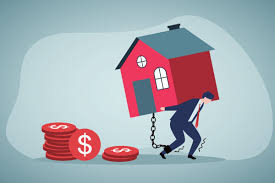
Breaking News
 Planned Parenthood Warns Funding Cut Will Result In Birth Of Thousands Of Babies
Planned Parenthood Warns Funding Cut Will Result In Birth Of Thousands Of Babies
 CIA: Our Trump-Russiagate Claims Were Corrupt, Our Claims On Iran Are …
CIA: Our Trump-Russiagate Claims Were Corrupt, Our Claims On Iran Are …
 Spying on Iran: How MI6 infiltrated the IAEA
Spying on Iran: How MI6 infiltrated the IAEA
 Slate Truck's Under $20,000 Price Tag Just Became A Political Casualty
Slate Truck's Under $20,000 Price Tag Just Became A Political Casualty
Top Tech News
 xAI Grok 3.5 Renamed Grok 4 and Has Specialized Coding Model
xAI Grok 3.5 Renamed Grok 4 and Has Specialized Coding Model
 AI goes full HAL: Blackmail, espionage, and murder to avoid shutdown
AI goes full HAL: Blackmail, espionage, and murder to avoid shutdown
 BREAKING UPDATE Neuralink and Optimus
BREAKING UPDATE Neuralink and Optimus
 1900 Scientists Say 'Climate Change Not Caused By CO2' – The Real Environment Movement...
1900 Scientists Say 'Climate Change Not Caused By CO2' – The Real Environment Movement...
 New molecule could create stamp-sized drives with 100x more storage
New molecule could create stamp-sized drives with 100x more storage
 DARPA fast tracks flight tests for new military drones
DARPA fast tracks flight tests for new military drones
 ChatGPT May Be Eroding Critical Thinking Skills, According to a New MIT Study
ChatGPT May Be Eroding Critical Thinking Skills, According to a New MIT Study
 How China Won the Thorium Nuclear Energy Race
How China Won the Thorium Nuclear Energy Race
 Sunlight-Powered Catalyst Supercharges Green Hydrogen Production by 800%
Sunlight-Powered Catalyst Supercharges Green Hydrogen Production by 800%
A Third Of American Households Are Over-Burdened By Housing Costs

While the overall rate of households burdened by housing cost in the U.S. was 32.7 percent in 2023, Statista's Katharina Buchholz shows in the chart below, several states had even higher average burdens.
California, known for its high cost of living, came in at 41.7 percent of burdened households, followed by Hawaii at 39.5 percent, Florida at 38.6 percent and New York at 38.2 percent.
In general, West Coast states and those in the country's populous Northeast showed the highest burdens, with the addition of sunshine locations Florida and Hawaii.
The least burdened households were found in the interior of the country, in West Virginia, North Dakota and Iowa, where fewer than a quarter of households felt an outsized financial burden because of housing costs. Colorado and Texas came in 11th and 12th.
The report published this week shows that renters are more often overburdened by their costs that homeowners, but that the gap has been closing in recent years.
Before and after the Great Recession, homeowners were still more overburdened than renters in the country, but this equilibrium changed in 2012 when renters began to be burdened more by rising rent costs while homeowners were profiting from zero interest rates.
With the end of the no-interest era in 2022, homeowners' burden jumped up, while the economic hardships of the inflation crisis affected both types of households.
The researchers also identified higher insurance premiums and property taxes as an issue for homeowners, while saying that more than half of renters were spending more than 50 percent of household income on renting in 50 out of the 100 largest metro areas in the United States.

 He 3D Printed a Whole House
He 3D Printed a Whole House

